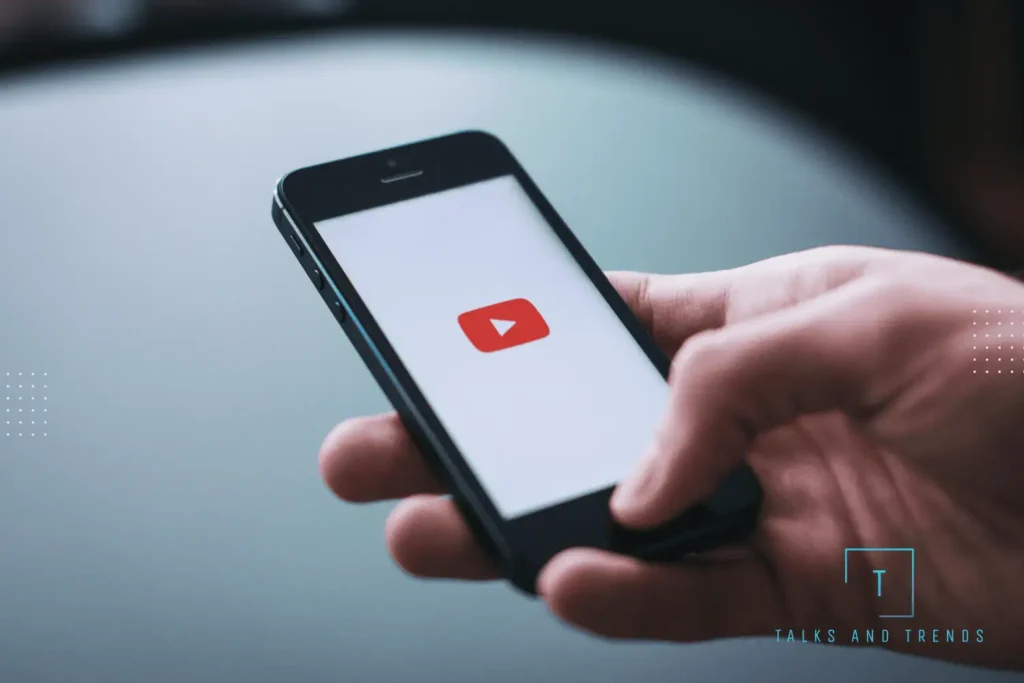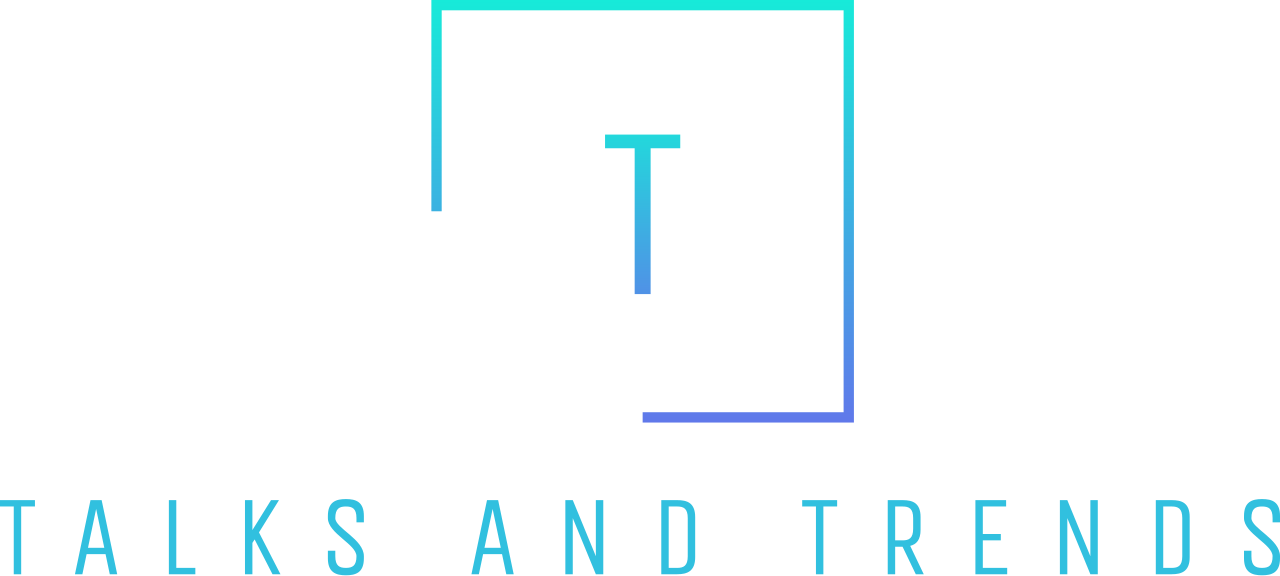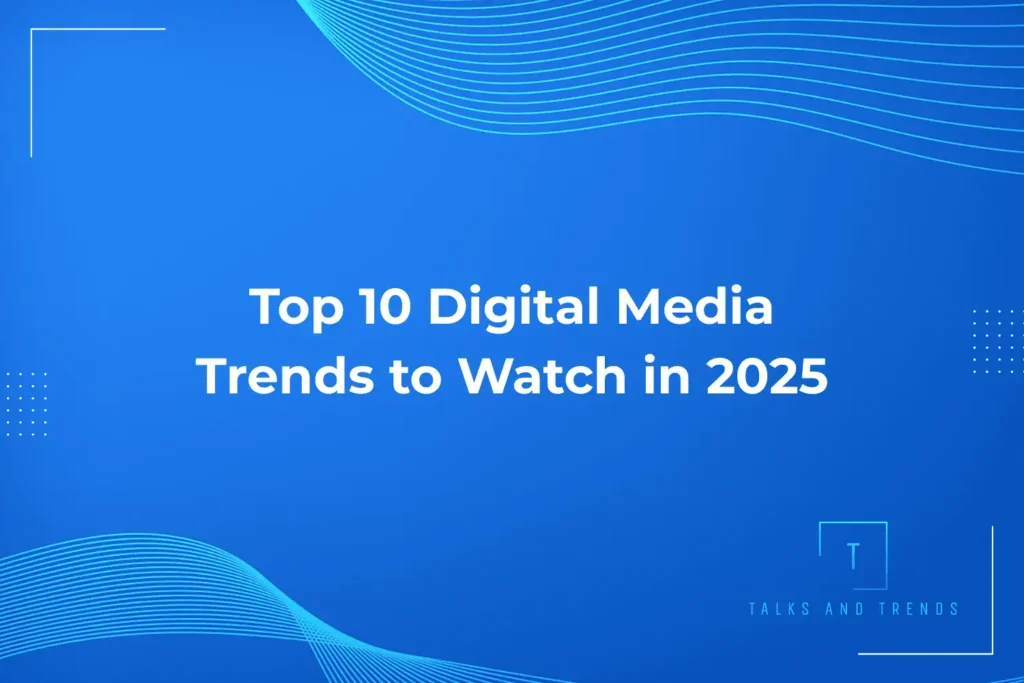Introduction
Think back just a few years ago. Watching TV meant flipping through cable channels, and news updates came mostly from newspapers or prime-time broadcasts. Fast forward to today, and things look very different. We stream shows on multiple platforms, scroll through short videos on TikTok or Instagram, and listen to podcasts during our morning routines.
This transformation shows no signs of slowing down. In fact, digital media in 2025 is moving even faster—powered by AI, immersive technologies, and shifting audience behavior. Whether you’re a casual consumer, a creator, or a business owner, understanding these changes is the key to staying relevant.
In this blog, we’ll dive into the top 10 digital media trends to watch this year—explaining what they mean, why they matter, and how they’re shaping the future of content and communication.
Related: Top 7 Entertainment Trends Shaping Media in 2025

1. AI-Powered Content Creation
Artificial Intelligence is no longer a buzzword—it’s part of everyday media production. From AI-generated videos and written articles to tools that suggest captions or edit podcasts automatically, AI is transforming how content is created.
What makes this exciting is accessibility. Small businesses and individual creators now have the same creative power as large studios. For example, someone running a small online shop can use AI to create promotional videos, social posts, and even blog content in hours instead of weeks.
Of course, the human touch still matters—AI provides efficiency, but creativity and originality still come from people. The winning formula is likely to be AI + human creativity working together.
Reference: World Economic Forum – AI Transforming Media
2. Short-Form Videos Continue to Rule
If you’ve spent any time online, you’ve noticed that short videos are everywhere. TikTok, Instagram Reels, and YouTube Shorts have redefined how people discover and consume content.
In 2025, this trend shows no signs of slowing down. The reason? Short videos fit perfectly into our fast-paced lifestyles. Whether it’s a cooking hack, a comedy skit, or breaking news, people love content they can watch in under a minute.
For brands, this means shifting strategies. Long commercials are out—snappy, relatable clips are in. The focus is on entertainment and authenticity, not polished perfection.
Related: Entertainment Trends 2025
3. Streaming Platforms Expanding Beyond TV

The streaming wars are heating up. Platforms like Netflix, Disney+, and Prime Video are no longer competing only on series and films. They’re adding live sports, interactive storytelling, and even gaming features.
Another big change is the rise of ad-supported subscriptions. With so many platforms to choose from, viewers are overwhelmed by costs. Many now prefer cheaper options with ads, which opens the door for brands to reach highly targeted audiences.
Local streaming services are also gaining popularity, especially in regions where global platforms can’t always cater to cultural preferences.
4. Podcasts Becoming Everyday Media
Podcasts have quietly become a major part of digital life. Millions of people now rely on them for learning, entertainment, and staying updated while multitasking.
What’s driving this growth? Podcasts are intimate, flexible, and easy to consume on the go. You can listen while cooking, commuting, or working out. In 2025, more creators and businesses are investing in podcasts, not just as a side project but as a main channel for storytelling and brand building.
Technology is also expanding access. AI voice tools are making it possible to translate podcasts into multiple languages, which could help creators reach global audiences like never before.
Reference: Statista – Podcast Industry Market Size
5. Influencers Driving Digital Culture
Influencers aren’t just online personalities anymore—they’re shaping entire industries. From beauty and fitness to gaming and travel, influencers are now the go-to choice for brands looking to connect with real communities.
Interestingly, it’s not always the big names that matter most. Micro-influencers—those with smaller but highly loyal followings—are proving more effective because their recommendations feel authentic.
The next phase is influencer-led businesses. Many influencers are creating their own product lines, subscription services, and even digital platforms, turning themselves into full-fledged media brands.
6. AR & VR Making Media More Immersive
Immersive technologies like Augmented Reality (AR) and Virtual Reality (VR) are becoming part of the mainstream media experience.
Think about AR filters on Instagram or trying on furniture virtually before buying it online. These aren’t just fun add-ons—they’re transforming how people engage with content and products.
In entertainment, virtual concerts, VR gaming, and interactive storytelling are on the rise. As devices become more affordable, these experiences will move from niche to everyday media.
Reference: Forbes – How AR/VR is Changing Entertainment
7. Social Media as a Primary News Source
Traditional news outlets are losing ground as more people turn to social media for updates. Platforms like X (formerly Twitter), TikTok, and Instagram are now where breaking news spreads first.
While this makes information more immediate, it also raises questions about accuracy. Misinformation spreads quickly, forcing media organizations to adapt. Many are now using short, engaging formats—like video explainers and infographics—to deliver trustworthy updates on the same platforms.
For younger generations, this shift is especially strong. Social-first news isn’t just a trend—it’s the new normal.

8. Personalization Everywhere
In the digital world, people expect content to feel personal. Thanks to big data and AI, platforms can now tailor experiences to each user’s preferences.
Netflix suggesting what to watch, Spotify creating personalized playlists, or e-commerce sites recommending products—these are everyday examples of personalization in action.
In 2025, personalization will go even deeper. News feeds, ads, and shopping experiences will become more targeted, making the digital experience feel unique to each person. While this improves convenience, it also brings discussions about data privacy into focus.
9. Shifts in Monetization Models
The way digital media makes money is evolving. Subscriptions used to dominate, but audiences are reaching their limit. Instead, hybrid models that mix ads and affordable subscription tiers are gaining traction.
Creators are also exploring new income streams. From memberships on Patreon to exclusive content platforms and merchandise, diversification is the key. Web3 innovations like NFTs are opening up new ways for creators to own and sell their work directly to fans.
For businesses, this means more options to engage audiences through sponsorships, partnerships, and creative ad formats.
10. Sustainability in Media
As conversations about climate change grow louder, the media industry is under pressure to become more sustainable.
Streaming and cloud services require huge amounts of energy, which has led companies like Google and Microsoft to invest in renewable-powered data centers. At the same time, audiences are becoming more selective, often supporting brands that align with eco-friendly values.
In 2025 and beyond, sustainability will become a competitive advantage. Media companies that prioritize green practices will not only reduce their footprint but also strengthen audience trust.
Conclusion
The digital media landscape in 2025 is full of possibilities. What ties all these trends together is a shift in control—audiences are shaping the industry as much as the technology is. People want fast, interactive, and personalized content, and businesses that adapt will stay ahead.
From short-form videos and podcasts to immersive AR/VR experiences and AI-powered creation, the way we engage with media is evolving at lightning speed. For creators and brands, the opportunity lies in experimenting, staying authentic, and being ready to grow with these changes.

